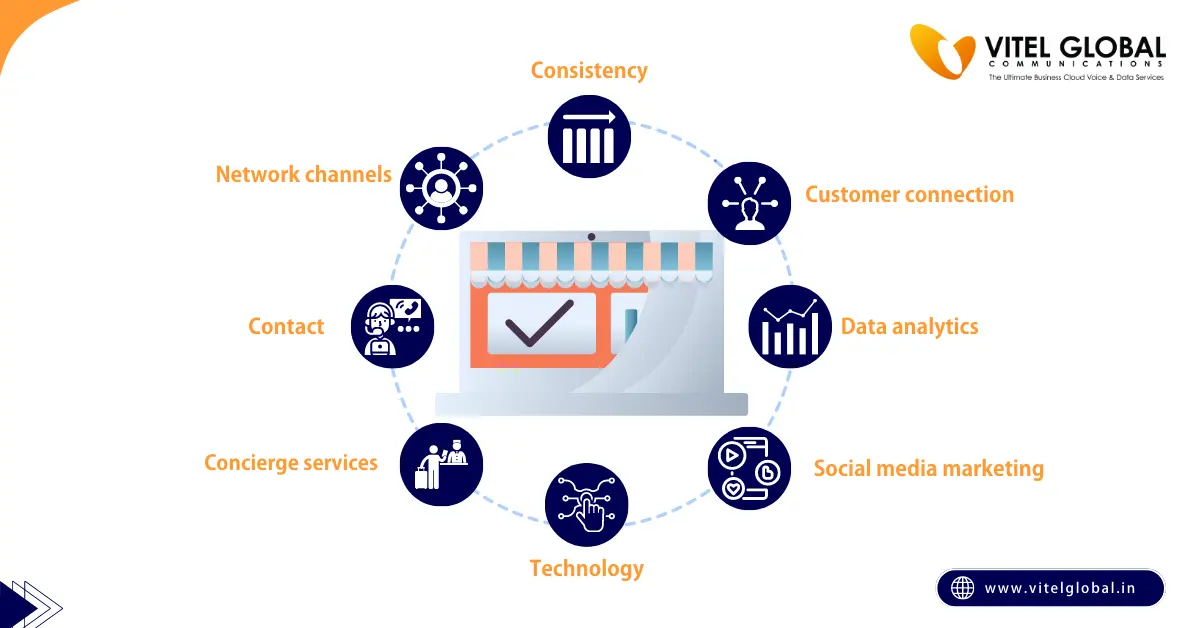Table of Contents
The Omnichannel retail strategy is a new trend for a more multi-channel approach. Retailers can offer their customers an improved shopping experience by using different platforms for their lifespans. Methods benefit the retailer, allowing consumers to buy more efficiently and effectively.
We’ve put together this blog post highlighting eight essential tips for building an omnichannel retail strategy. It advises strategies to create an effective presence on various platforms and create relevant experiences that will give your customers a sense of exclusivity.
Depending on the item, people shop for their clothes in traditional brick-and-mortar stores and online. Omnichannel retailing is also referred to as omnichannel marketing and is a marketing strategy that offers a seamless shopping experience across multiple channels, such as physical store locations and digital media.
Omnichannel Retail:
Omnichannel retailing helps retailers develop customer loyalty programs by offering different experiences across their channels. Omnichannel retailing encompasses physical stores, online shopping, catalogs, social media platforms, and mobile apps. Retailers are juggling multiple activities in the same store and across various channels, which can distract shoppers.
The retail industry is also facing new challenges caused by increased competition. The Internet has made it much easier for consumers to buy directly from brands they trust at a lower price through online shopping platforms. As a result, retailers face a margin squeeze due to fierce all-too-real price competition driven by brands who want to take market share away from other retailers and maintain a toehold in the market.
There is hope on the horizon. Omnichannel retailing is about something other than a business changing all the time. It’s more about developing a formula that works for your business, adjusting it as necessary, and keeping it working consistently. Retailers who use omnichannel marketing strategies can create customer loyalty programs, reduce price competition through superior pricing, and increase profits.
The key to unlocking the value of omnichannel marketing is in creating an automated and scalable experience across multiple channels that works seamlessly. Omnichannel marketing is a concept that encompasses all the channels you use when customers come to your store. It contains physical stores, web stores, catalogs, mobile applications, and social media sites, to mention just a few.
By integrating each channel into one cohesive customer experience, many benefits can be achieved, such as:
- A greater likelihood of converting customers
- More conversions
- Lower risk
- Improved customer satisfaction
- Higher revenue
Tips for building Omnipresence

The rapid growth of e-commerce is making it difficult for retailers to compete. The omnichannel retail strategy provides a way to make all channels work together to overcome the challenge posed by e-commerce. The omnichannel retail strategy considers customer experience, people, processes, and brands.
This post will provide tips on building an omnichannel strategy from a retailer’s point of view!
1. Make Sure Online and Offline Channels Run in Parallel with Each Other
The best way to get people to buy your product is to have them visit your website and place an order. But what if you need to create a seamless experience? This results in a big problem because you will lose customers. The best way to achieve this is to ensure that online and offline channels run parallel. A parallel connection means that links on your website direct users toward the physical counterpart of your website (i.e., if you have an online fabric shop, make sure that there is a drawing of the fabric on how it looks).
2. Have a Consistent Look and Feel across All Channels
Consistency is essential for an omnichannel retail strategy to work. An excellent example of this is the BBC iPlayer. Launching BBC iPlayer on your computer lets, you see the same content as its television counterpart. The same applies to mobile platforms, where a company should ensure that its website and mobile platform are working together as best as possible so that a consumer can have a consistent experience no matter which medium they are using. It also ties into having a consistent brand identity across all channels.
3. Identify Ways of Connecting Online and Offline Customers
Shoppers can access online information almost instantly, meaning retailers must quickly get the correct information and product. The store should have clear signage so people know what they can buy and how to do it. Connection makes it critical for retailers to implement an omnichannel approach because it allows them to quickly see what is available in the store while helping customers find interesting products when shopping online. Here adopting Cloud- Based Phone services gives you the right solution for your connectivity. When customers visit a retail location using this strategy, they are automatically connected with the digital world through a smartphone or tablet device. The customer can then browse inventory, check prices, and place orders for items anywhere.
4. Use Data Analytics to Improve the Customer’s Experience
A retailer can use data analytics to study how customers are doing when they are shopping online. The idea of a retailer using data analytics is to improve the shopping experience of an online shopper by providing recommendations based on previous purchases or browsing online items that interest them. A retailer can also use this approach to monitor behavioral patterns, such as what items customers look at but don’t purchase or where they go after making a purchase.
5. Provide Social Media Marketing Medium
Social media is one of the most important digital marketing tools for retailers. The best way to use it is to incentivize customers to visit your website and shop through social media profiles such as Twitter and Facebook. Social media will allow shoppers to engage with your brand and see new products sold. Continue to monitor these interactions because this will be an excellent data source for you to use later on.
6. Use 3D Printing Technology in all Channels
3D printing technology is a relatively new approach that can revolutionize retail by doing exciting things with three-dimensional objects. Many retailers use this technology because it allows them to produce a 3D image of a product that can be viewed online. The benefit of this approach is that a customer can engage with your website and buy an item online while receiving it in the physical form!
7. Use Concierge Services in all Channels
Concierge services are available in many retail stores, but they don’t usually take advantage of this service due to its reputation as being too expensive or difficult to implement. However, concierge services greatly benefit retailers because they help anticipate customer needs by providing information about their purchases and shipping times. This approach can benefit customers because they can get their hands on the products they want faster and more efficiently.
8. Offer In-Store Pickup in all Channels
The idea of an omnichannel retail strategy is to make it easier and seamless for customers to get hold of the product they want without having to visit different locations. For this reason, retailers should offer in-store pickup in all channels so that a customer does not have to wait for a delivery at home.
Conclusion:
Be sure to promote it through relevant channels. Promotion by appropriate media will motivate your customers to visit their stores. And thus, creating an even stronger level of customer retention for your business with the support of business phone service providers. Although there are multiple channels, choosing the right and relevant channel will add value to your organization.






